We’ve all heard the phrase “breeding like rabbits,” but as a rabbit owner, you might wonder what that means for your pet bunny. Are you at risk of waking up to your house and yard overrun with baby bunnies? Should you get your rabbit spayed or neutered – and if so, what does that involve? What about if you just have one rabbit, is neutering or spaying still necessary?
The fact is, a female rabbit can give birth several times a year, producing up to 12 kits each time. Her reproductive system doesn’t take much of a break, either – she can get pregnant again the very next day after giving birth. So yes: if you have an intact or unneutered rabbits, it wouldn’t take long for you to be swamped with bunnies, and the huge responsibility that comes with them.
Bunny neutering or spaying isn’t just about preventing them from breeding. There are some important health benefits, even for rabbits who don’t have a companion. In this comprehensive guide, we’ll discuss everything you need to know about getting your bunny neutered or spayed.
We’ll cover:
- What is neutering or spaying a rabbit?
- What are the benefits of neutering or spaying a rabbit?
- How to go about neutering or spaying your rabbit.
What is Neutering or Spaying a Rabbit?
Neutering or spaying a rabbit is a surgical procedure performed to remove the testicles or ovaries and uterus of a rabbit. Neutering and spaying are safe procedures that prevent rabbits from reproducing, and from developing reproductive-related illnesses. It will also help them have longer and healthier lives compared to their unneutered counterparts.
Neutering is for male rabbits
Neutering is a surgical procedure done to sterilize male rabbits. It involves the removal of both testes via two incisions on the scrotal sac. This is also referred to as castrating a male rabbit.

A male rabbit still carries viable sperm for up to six weeks after the procedure. This means he doesn’t become sterile immediately and can still impregnate an unspayed female rabbit if they’re left together during this time. If you don’t want unexpected baby bunnies, keep your rabbits separate until at least six weeks after the male’s neutering operation.
Spaying is for female rabbits
Spaying, on the other hand, is done to sterilize the doe. It involves the removal of the ovaries and uterus through an incision on the abdomen. A spayed or neutered rabbit can also be said to be fixed or altered.
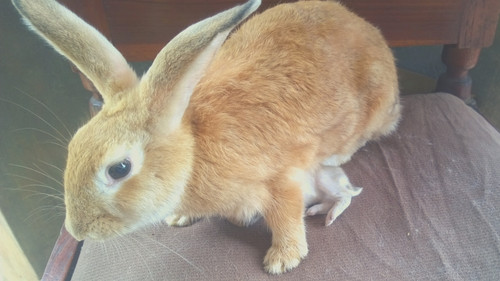
A spayed female becomes sterile immediately after the procedure is completed, so there’s no risk of her getting pregnant if she has contact with a male after her operation. However, it takes a couple of weeks for her surgical wound to heal, so she should not be left unattended with other bunnies until her vet gives her the all-clear.
What happens when a rabbit is neutered or spayed?
If you’ve decided to neuter your rabbit, you may want to know what happens during the surgery. For both males and females, the process starts with a very thorough health check by your veterinarian, who will make sure your rabbit is healthy enough to undergo the anesthesia and surgery safely.
The actual surgical procedure is different for males and females, due to their different anatomy. Here’s how it works.
Male rabbit
When a rabbit is to undergo a neuter procedure, they are placed under anesthesia. The hair in the scrotal area is shaved and surgically prepared to make the area sterile for surgery. The veterinarian then removes both testicles through cuts in the scrotum.
The incisions are then closed with sutures. Most vets use dissolvable sutures under the skin, so the bunny doesn’t chew them out. Some also use skin glue to hold the skin together.
Female rabbit
A female rabbit also undergoes surgical preparation before her spay. First, the bunny is placed under anesthesia, and her abdomen is shaved and sterilized. Next, the vet makes an incision on the abdomen, and removes the ovaries and the uterine horns to sterilize the doe.
Finally, the incision is closed with sutures. Again, most vets use dissolvable sutures under the skin, and might use skin glue on the surface.
What are the Benefits of Neutering or Spaying a Rabbit
Sterilizing your bunny comes with several benefits for both you and your pet. Here are some of them.
Population Control
Rabbits can reproduce several times a year due to a short gestation period, ranging between 25 and 28 days. So if you are not planning to breed your rabbit, it is advisable to sterilize them. Neutering or spaying your pet rabbit reduces the risk of unwanted pregnancies.

Overpopulation usually results in unwanted rabbits ending up abandoned in fields, streets, or parks to fend for themselves, as there are not enough spaces in animal shelters to look after them all. These helpless rabbits then suffer starvation and disease or fall victim to traffic accidents.

While placing your rabbits babies in a pet store might seem like a solution, there’s no guarantee they’ll get their needs met. Pet stores sell pets, including rabbits, to anyone who can afford to buy them, and they don’t necessarily check the type of home these pets end up in. An estimated 60% of pet rabbits are abandoned within the first year.
Helps prevent reproductive cancers
Altering or fixing your pet rabbits virtually eliminates the risk of cancer in the reproductive tract. For female rabbits, this relates to cancers of the ovaries, uterus, or mammary glands, which are sadly common in unaltered rabbits.
A 2022 study published in the Journal of Exotic Pet Medicine found that 40% of unaltered female rabbits over 3 years of age had a malignant tumor of the uterus.
Neutering male rabbits will help eliminate the risk of testicular cancer. A neutered or spayed bunny lives up to an average lifespan of seven to ten years.
Helps litter-training
Altered rabbits are easier to litter-train. Unneutered male rabbits spray urine to mark their territory, and some females do as well. Additionally, the urine of an intact male rabbit has a strong, unpleasant odor which most rabbit owners find unpleasant.
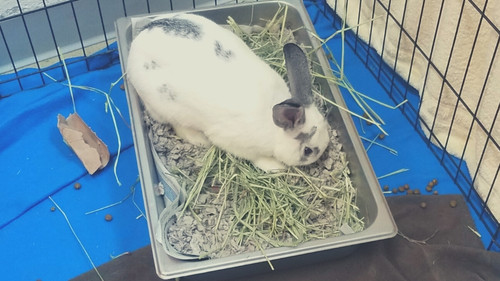
Spaying or neutering rabbits will help curb this behavior and makes it easier to litter-train them.
Reduces hormone-related behaviors
Sexual and aggressive behaviors are triggered on reaching sexual maturity, and male rabbits in particular can become a real nuisance during this period. Altering your pet male rabbit will reduce the chances of spraying urine to mark its territory or getting into fights with other animals.
Spayed females are less likely to lunge at, bite or scratch their owners. Spaying females also eliminates the chances of false pregnancies.
Better bonding
Rabbits are social animals and enjoy the company of other rabbits. Because fixing rabbits eliminates the aggressive behaviors triggered by hormones, your beloved pet becomes calmer and more amenable to making friends and bonding with them.
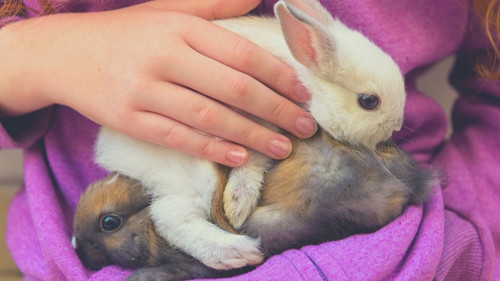
The ideal pair bond for pet rabbits is between a neutered male rabbit and a spayed female rabbit, although same-sex pairs can also get along happily if both have been fixed.
Is Neutering or Spaying Safe for Rabbits?
Neutering and spaying rabbits is an everyday procedure performed in veterinary clinics across the country. However, all surgeries and anesthesias involve risks, and rabbits are at greater risk of having a bad reaction to anesthetics because they may hide an underlying illness.
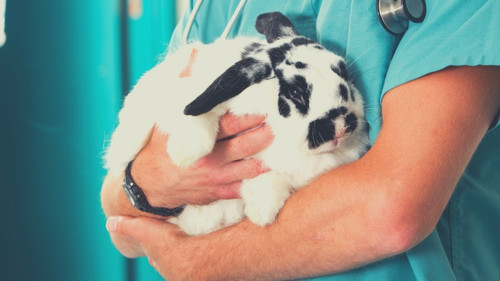
I recommend seeking out experienced rabbit veterinarians to look after your pet and perform their neutering surgery.
Let your vet know any symptoms you’ve noticed or concerns you have. Your vet should also check your rabbit thoroughly before scheduling the surgery, and again on the morning of the operation.
When is it dangerous to neuter or spay a rabbit?
While the surgical procedure to sterilize a healthy rabbit is relatively safe, there are certain situations in which it can be dangerous to spay or neuter a rabbit.

Neutering is riskier in older rabbits. For most rabbits above two years, I recommend a comprehensive health check before the surgery, including blood tests and a urine test to check for urinary tract infections. Though this may be more expensive than the operation itself, it could help detect underlying conditions that could make the surgery riskier.
It is also unsafe to spay or neuter bunnies in poor health. Problems like snuffles, obesity, and dental disease can make the procedure dangerous.

Lastly, it is not advisable to neuter rabbits younger than four months due to their size and the position of their reproductive organs. Some veterinarians prefer to wait till around six to eight months of age to allow for proper bone growth.
Discuss the potential risks and benefits with your veterinarian to choose the best option for your beloved pet.
Can it be too late to neuter or spay a rabbit?
While there’s no clear cut-off to say a rabbit is “too old” to be spayed or neutered, we do have to weigh up the risks for our older patients. For example,
older female rabbits are at higher risk of uterine cancer, but they’re also at greater risk from the anesthetic and surgery.
Some veterinarians do not routinely offer neutering surgery for rabbits over five to six years old for that reason.
Again, discuss with your veterinarian to choose the right option for your pet.
How to Go About Neutering or Spaying a Rabbit
Now you know that it is safe to neuter or spay your bunny, as well as some of its benefits. Here are some additional pointers on how to go about altering your rabbit.
- How to know if a bunny has been neutered or spayed already?
First, if your rabbit was already past its kitten days when you got it, you need to find out if your pet has been spayed or neutered. If you adopted your rabbit from an animal shelter, they should be able to confirm for you whether it has already been altered.
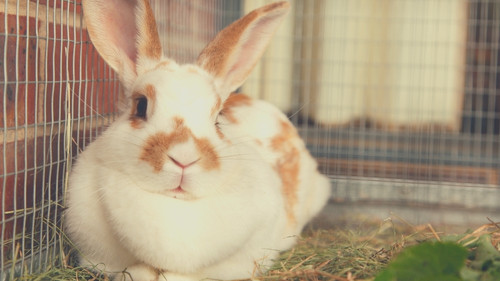
If you’re not sure, you can ask your vet to check in an appointment. They may be able to find a surgical scar, neutering tattoo, or check with an ultrasound. In some cases, the only way to find out is to operate and have a look inside.
- Where to get your pet rabbit neutered or spayed?
You can get your beloved pet spayed or neutered at any rabbit-savvy veterinary clinic, where you can be sure they use safe rabbit surgery techniques.
The House Rabbit society has a list of expert rabbit veterinarians in the United States and around the world, which you can use to find an experienced rabbit vet in your area.
Additionally, typing the phrase “rabbit neutering near me” or “rabbit spay near me” in a search engine should bring up some valuable recommendations.
- When can you neuter or spay your pet rabbit?
You can neuter or spay your rabbit as soon as it is sexually mature. For example, if your rabbit is four months or older and showing signs of aggression, marking, or scenting, it is ready to be neutered.

Males can be altered as soon as their testicles descend. This generally occurs when they are around 10 to 12 weeks. However, some vets may prefer to wait longer.
Additionally, giant breeds may reach sexual maturity a little later, so it may be necessary to delay the procedure in these breeds.
Females can be neutered around four months of age, although most vets prefer to wait till around six months as surgery is riskier in a younger rabbit.
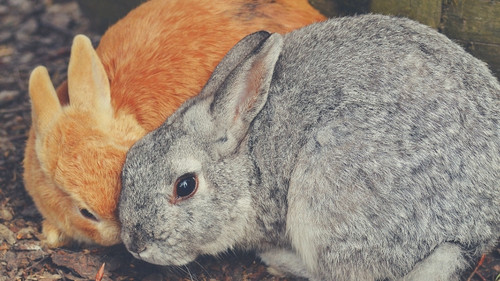
If you have a male and female, keep them separate during this time, even if they are brother and sister – I can’t count how many rabbit clients have ended up with unwanted litters because they assumed their rabbits wouldn’t breed!
- What to do before the surgery?
It is important not to change your bunny’s routine in any way before the surgery. Unlike cats and dogs, there is no need to fast or withhold food from your pet.
If the receptionist or vet tells you not to feed your bunny before the procedure, you should take your pet somewhere else, as this is a sign that they are not experienced with rabbits.
Bring food and treats to the hospital. If your pet has a favorite treat, bring it, as it must start eating immediately after the surgery.
Lastly, if your pet has a bonded friend, call ahead to find out if you could bring it along. Being with their bonded friend can help ease stress and comfort your pet.
- Post-surgery care and recovery
You must prepare for post-operative care to help speed up your bunny’s path to recovery following a spay or neuter. Males recover faster than females from spay surgery. This is because the spay procedure is more invasive so the female may require extra care.
Ask your vet for pain medications to take home. You should be sent home with at least three days worth of pain medication.
Provide fresh water and their regular food. Your bunny may not feel like eating on the day of the surgery, but it should resume eating within 24 hours after the procedure to avoid complications like GI stasis.
If you notice that your pet doesn’t start eating within 24 hours, or if there is a decrease in fecal output, contact your veterinarian immediately.
Avoid handling your pet excessively on that first night. Instead, keep them in a warm and quiet area. If they have a bonded partner, consider keeping them together for comfort. However, you may need to watch them to ensure it is not chased or harassed by their partner, and that their partner doesn’t try to groom the surgical wound.
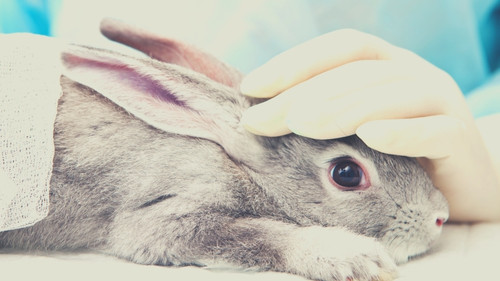
Restrict your bunny’s activity or exercise for the next seven days. You’ll also have to check the stitches twice a day for at least a week to ensure that your pet is not pulling on them.
A little swelling and redness at the incisional site are expected, but if you see any bleeding or discharge, contact your vet immediately.
Lastly, keep neutered males away from intact females, as they still carry viable sperm for up to six weeks.
- How much does it cost to spay/neuter a rabbit?
The cost of neutering a rabbit varies a lot depending on your location. The neutering operation for males is generally cheaper than the spaying operation for females, because of the complexity of the surgery.
Conclusion
Neutering or spaying rabbits basically involves sterilizing them by removing their reproductive organs. It is a relatively safe procedure if performed by a rabbit-savvy vet, and can help your rabbit enjoy a longer and healthier life.
If you have found this article useful, share it with your fellow rabbit owners. And if you have questions about your pet, leave them in the comments section below.


